The Story of Phosphorus:
7 reasons why we need to transform phosphorus use in the global food system
Dr Dana Cordell, Research Principal, Institute for Sustainable Futures, University of Technology Sydney (UTS) Australia
Read the full article: Life’s Bottleneck: Sustaining the World’s Phosphorus for a Food Secure Future
1. Phosphorus equals food
Without phosphorus, we can’t produce food. Phosphorus is as essential as water, carbon or oxygen.
 Phosphorus is essential for all living matter, including bacteria, plants and animals. We get our phosphorus from the food we eat, which in turn comes from the phosphate fertilizers we apply to crops. Phosphorus fertilizer is essential for modern food production and is the limiting factor in crop yields. Phosphorus is a critical global resource, along side water and energy resources.
Phosphorus is essential for all living matter, including bacteria, plants and animals. We get our phosphorus from the food we eat, which in turn comes from the phosphate fertilizers we apply to crops. Phosphorus fertilizer is essential for modern food production and is the limiting factor in crop yields. Phosphorus is a critical global resource, along side water and energy resources.
Around 90% of the phosphate rock extracted globally is for food production (the remainder is for industrial applications like detergents).
2. Growing food demand, growing phosphorus demand
Nine billion mouths to feed by 2050 with growing appetite for meat and dairy means increasing demand for phosphorus.
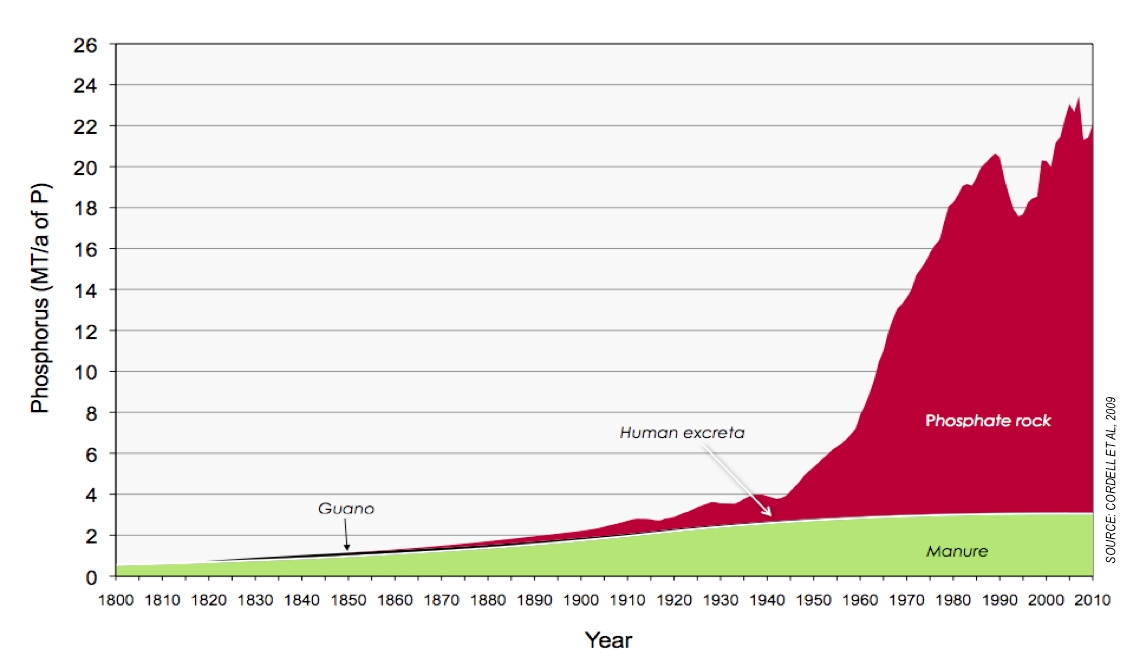
Demand for phosphorus is increasing globally, despite a downward trend in developed regions like Western Europe. This is due to an increasing per capita and overall demand for food in developing countries, from increasing population and global trends towards more meat- and dairy-based diets, which are significantly more phosphorus intensive.
The average diet today results in the depletion of around 22.5 kilograms of phosphate rock per person each year (or 3.2 kilograms of P). This is 50 times greater than the 1.2 grams per person per day recommended daily intake of P.
Achieving the Sustainable Development Goal of eradicating hunger and achieving food security, means we must change the way we source, use and equitably distribute phosphorus in global food production. Further to market forecasts, there is a ‘silent’ demand from the many farmers with phosphorus-deficient soils who can’t afford fertilizers. The current phosphorus inequity is most evident on the African continent, which is simultaneously home to the world’s largest phosphate rock reserves (over 75% of the global share) and the continent with the lowest phosphorus fertilizer application rates, some of the most phosphorus-deficient soils and the most food insecure region.
3. Finite phosphate: we’ve used up the good stuff
The world’s main source of phosphorus fertilizer – phosphate rock – has taken millions of years to form.
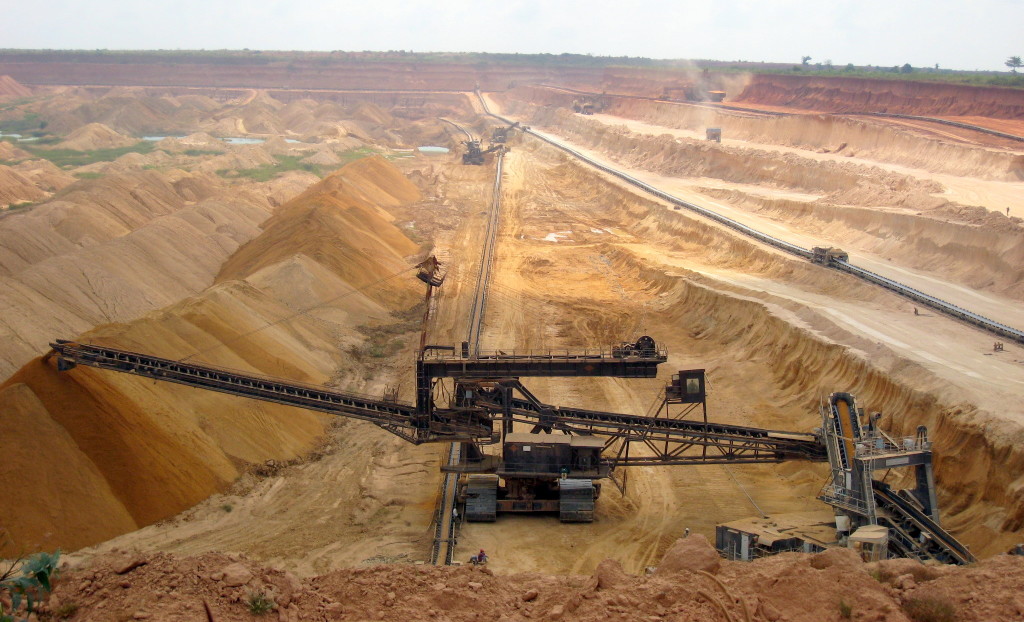
The majority of the world’s agricultural fields today rely on fertilizers derived from phosphate rock. Phosphate rock is a non-renewable resource that has taken 10-15 million years to form from seabed to soil via tectonic uplift and weathering. Many recent studies indicate that phosphorus demand could outstrip supply this century if no fundamental changes are made to the current trajectory, while others argue we have ‘hundreds’ of years remaining (see Peak Phosphorus).
While oil and other non-renewable natural resources can be substituted with other sources when they peak (like wind, biomass or thermal energy), phosphorus has no substitute in food production.
While there is some uncertainty about the timeline, there is consensus that the quality of remaining phosphate rock is declining. That is, the concentration of P in mined phosphate rock is decreasing and the concentration of unwanted clay particles and heavy metals like cadmium are increasing. The cadmium content of phosphate rock can be very high. This is either considered a harmful concentration for application in agriculture, or, expensive and energy intensive to remove (maximum cadmium concentrations for fertilizers exist in some regions, like Western Europe). Further, remaining phosphate reserves are becoming more difficult to physically access (mining under the sea bed has begun). Extracting the same amount of phosphorus is requiring more energy, is more costly, and is generating more waste and byproducts.
With growing concern about fossil fuel scarcity, we cannot afford to continue the energy intensive process of mining, processing and transporting phosphate rock and fertilizers across the globe. Phosphate rock is one of the most highly traded commodities in the world. Around 30% of energy use in agriculture in the US is from fertilizer production and use.
4. Geopolitical risks: an issue of national security?
All farmers need phosphorus, yet just 5 countries control 88% of the worlds remaining phosphate rock reserves
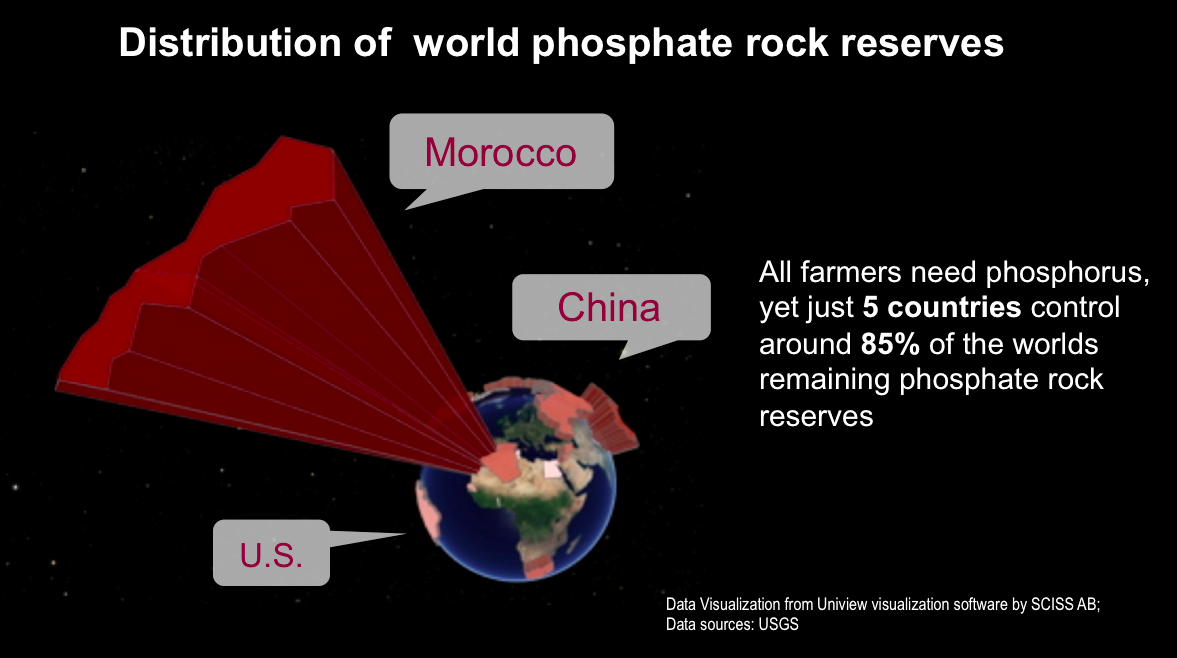
Phosphate rock is unevenly distributed across the globe resulting in only a small number of countries controlling the world’s remaining reserves. According to the US Geological Survey in 2015, Morocco, China, Algeria, Syria & South Africa together control 88% of the world’s phosphate. Morocco alone controls 75% of the world’s high-quality reserves, and the Kingdom’s share is expected to increase to 80-90% in the coming decades. The US used to be the world’s largest producer, consumer, importer and exporter, yet now has approximately 20 years of reserves remaining. while China has recently imposed a 135% export tariff to secure domestic fertilizer supply, which has halted most exports.
This means all importing countries – from India to Australia to Europe – are vulnerable to price fluctuations and supply disruptions in producing countries.
Further, the phosphate rock located in Western Sahara is controlled by Morocco. While Morocco claims rightful ownership of the land and phosphates of Western Sahara, this occupation is condemned by the UN and not recognised by any other nation, nor the Saharawi people of Western Sahara, many of whom are living in refugee camps in neigbouring Algeria. Many of Scandinavia’s major banks and pension funds have divested from companies importing ‘conflict phosphates’ from Western Sahara via Morocco.
5. An inefficient global food system
Phosphorus is mis-managed: Four-fifths is lost or wasted in the supply-chain from mine to field to fork
 Phosphorus is scarce not only because it is finite – but because it is mismanaged in the food system. Only one-fifth of the phosphate mined specifically for food production ends up in the food we eat globally. Four-fifths of the phosphorus is lost or wasted during mining and processing, fertilizer production and distribution, fertilizer application on farms, food production and trade, right through to the dinner table. Much of these losses could be avoided through improved practices and efficiency measures, while the remaining waste (banana peels to manure) could be captured for reuse as fertilizer.
Phosphorus is scarce not only because it is finite – but because it is mismanaged in the food system. Only one-fifth of the phosphate mined specifically for food production ends up in the food we eat globally. Four-fifths of the phosphorus is lost or wasted during mining and processing, fertilizer production and distribution, fertilizer application on farms, food production and trade, right through to the dinner table. Much of these losses could be avoided through improved practices and efficiency measures, while the remaining waste (banana peels to manure) could be captured for reuse as fertilizer.
Much of the lost phosphorus ends up in our rivers, lakes and oceans where it can cause toxic algal blooms – from the Baltic Sea, to China to the Great Lakes of North America to Australia’s Great Barrier Reef. Algal blooms can kill fish and other aquatic life, pollute our drinking water and damage our tourism and fishing industries.
6. Cheap fertilizer – a thing of the past for farmers
Farmers need access to phosphorus, yet up to a billion farmers lack access to fertilizer markets.
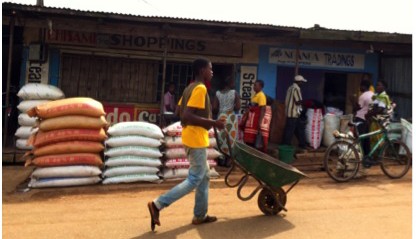
Already many of the world’s farmers can’t afford fertilizers. Sub-Saharan African farmers in some landlocked countries can pay 2-5 times more at the farm gate for fertilizers than European farmers, due to high transport costs (road/rail), handling, duties and even corruption.
In 2008, the price of phosphate rock spiked 800%. This led to farmer riots and suicides from India to Haiti.
While demand continues to increase, the cost of mining phosphate rock is increasing due to transport in addition to a decline in quality and greater expense of extraction, refinement and environmental management.
Non-food demand for phosphorus has also increased: the demand for first generation biofuel crops over the past decade increased global demand – and hence price – of phosphate rock.
7. No one is monitoring phosphorus: whose responsibility is it?
There are currently no international or national policies, guidelines or organisations responsible for ensuring long-term availability and accessibility of phosphorus for food production.
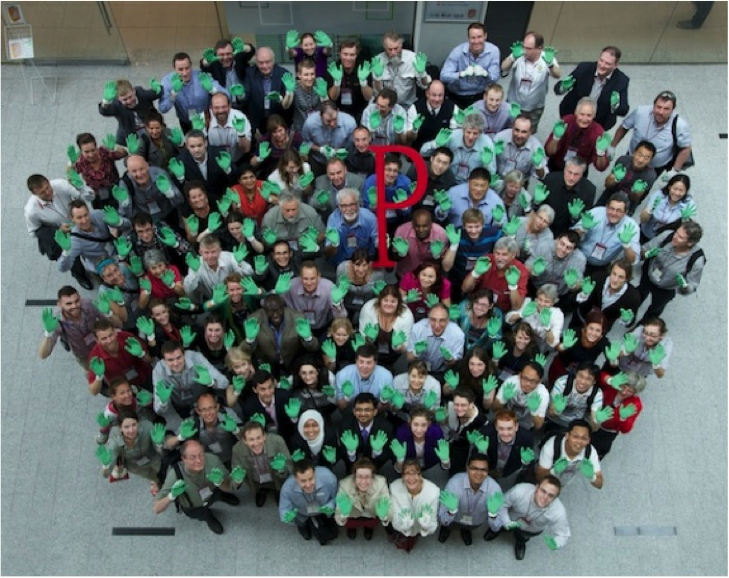 Despite being one of the world’s most critical resources, there are no international organisations like the UN taking responsibility for phosphorus security in the long term. There is no independent, comprehensive and transparent data on the world’s remaining phosphate rock and trade. The US Geological Survey collates data provided directly by companies and countries as a public service, with no way of verifying the source, assumptions and authenticity of the data.
Despite being one of the world’s most critical resources, there are no international organisations like the UN taking responsibility for phosphorus security in the long term. There is no independent, comprehensive and transparent data on the world’s remaining phosphate rock and trade. The US Geological Survey collates data provided directly by companies and countries as a public service, with no way of verifying the source, assumptions and authenticity of the data.
The management of phosphorus is fragmented between many different sectors – from the mining and fertilizer sector where phosphorus is a globally-traded commodity, through to the sanitation sector where phosphorus is a pollutant, wastewater indicator and in some cases a resource to be recovered.
Whose responsibility is long-term governance of phosphorus for food security? the fertilizer industry? Investors? National governments? the UN? Agri-food companies? Food consumers? Sanitation providers?
Further reading:
Cordell D, Turner, A & Chong, J (2015), The hidden cost of phosphate fertilizers: mapping multi-stakeholder supply chain risks and impacts from mine to fork, Global Change, Peace and Security, Special Issue.
Cordell, D. & White, S (2015), Tracking phosphorus security: indicators of phosphorus vulnerability in the global food system, Food Security, Springer, Feb 2015, Vol 7, Issue 2, p.337-350.
Cordell, D. & White, S (2014), Life’s bottleneck: sustaining the world’s phosphorus for a food secure future, Annual Review of Environment and Resources, Vol. 39:161-188.
Cordell, D. & White, S. Phosphorus security: global non-governance of a critical resource for food security, Edward Elgar Encyclopedia of Global Environmental Politics and Governance, (Eds) Pattberg, P & Fariborz Zelli, F. 2015. In press.
Cordell, D. & Neset, T-S, (2014) Phosphorus vulnerability: A qualitative framework for assessing the vulnerability of national and regional food systems to the multi-dimensional stressors of phosphorus scarcity, Global Environmental Change, 24 (2014) 108–122.
